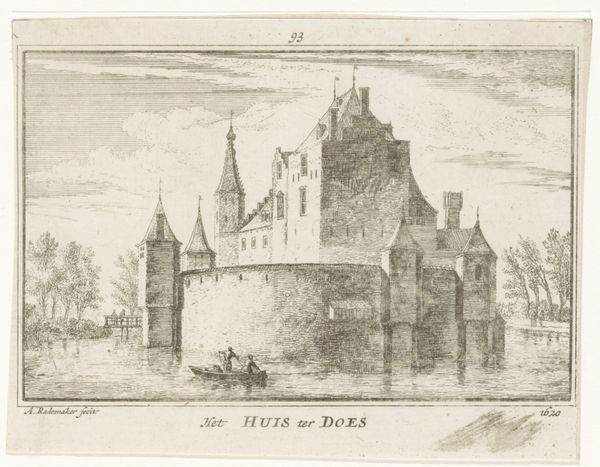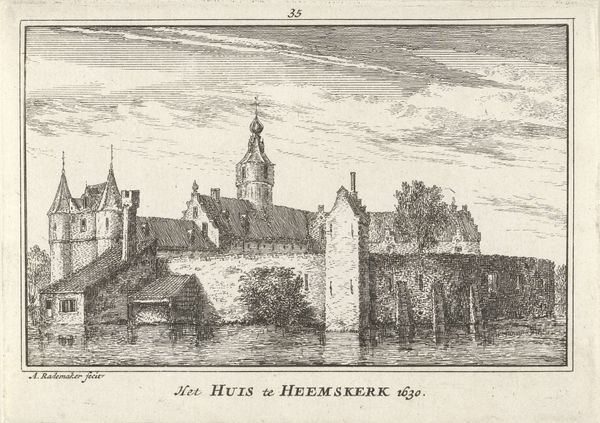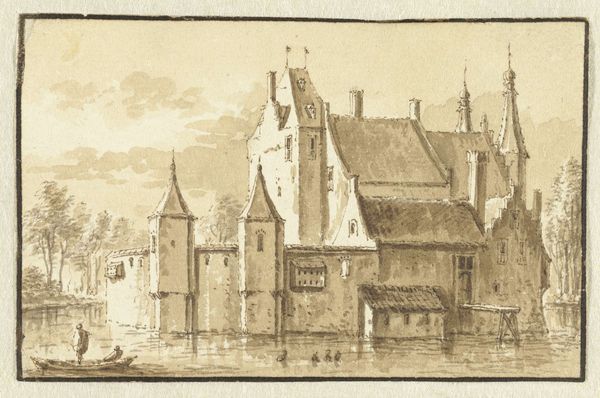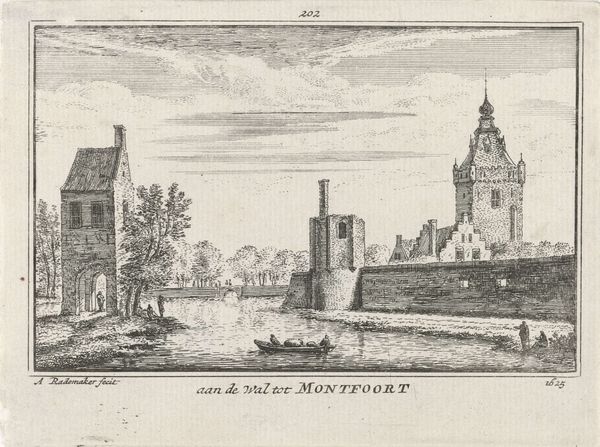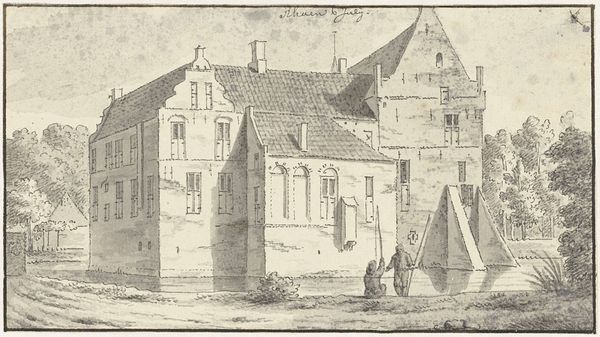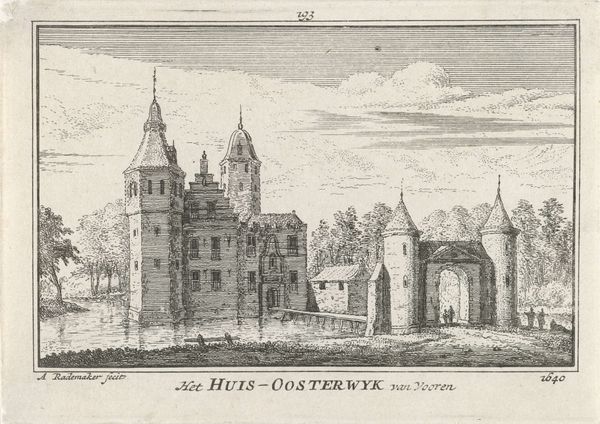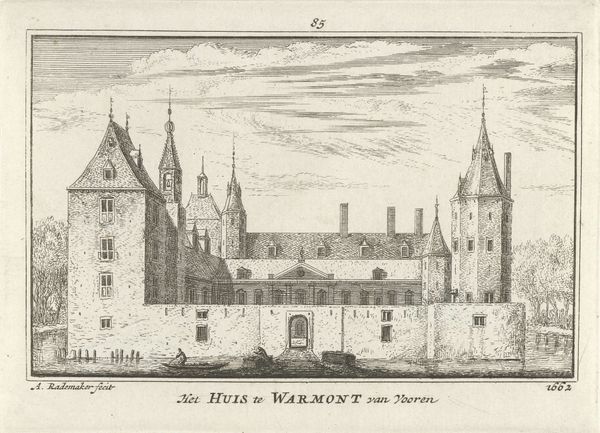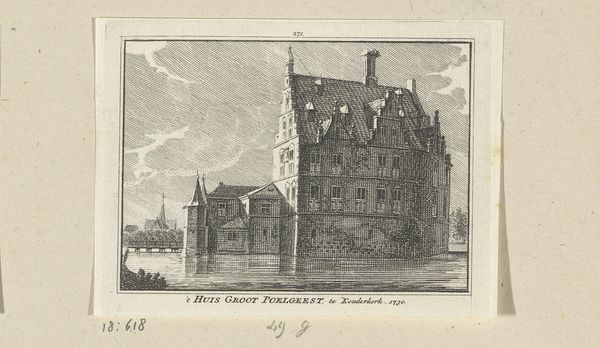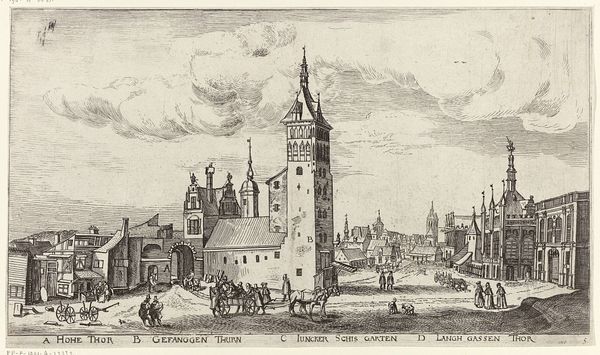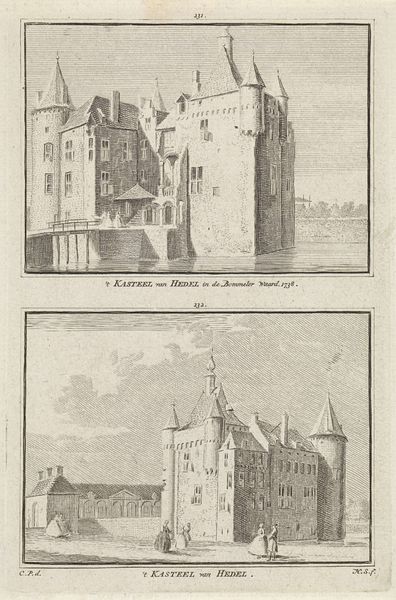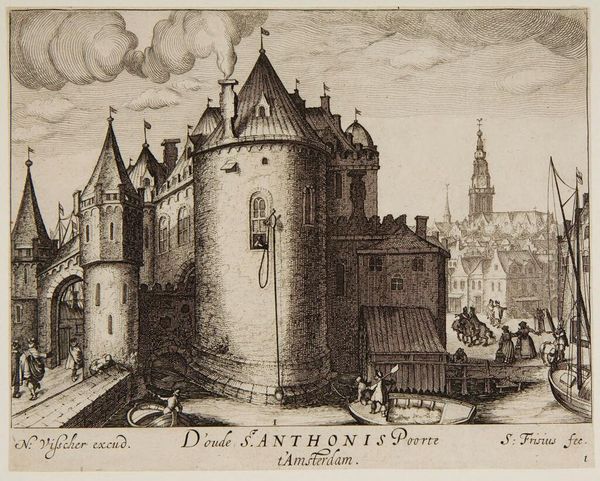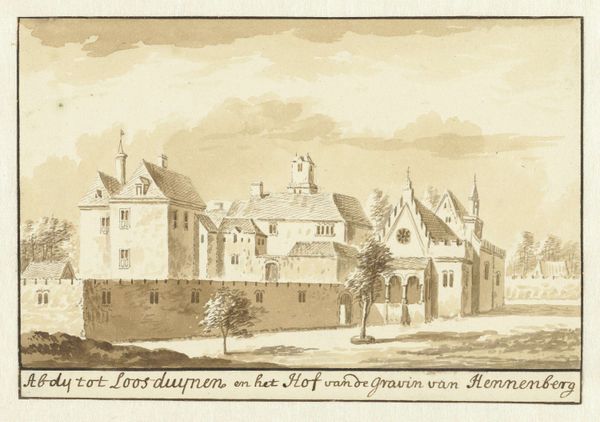
print, engraving, architecture
#
baroque
#
dutch-golden-age
# print
#
landscape
#
engraving
#
architecture
Dimensions: height 80 mm, width 115 mm
Copyright: Rijks Museum: Open Domain
Curator: My initial reaction is this engraving projects an aura of serene authority, doesn't it? The building practically emerges from the water. Editor: I can see that! It also speaks of something inaccessible, something held back. Almost as though it’s protecting itself from some sort of unseen threat. Curator: Indeed, Abraham Rademaker’s "Gezicht op Huis ter Does bij Leiderdorp, 1620", crafted between 1727 and 1733, shows us much about the period's relationship between architecture and societal symbolism. As you can observe, Rademaker employed detailed engravings in the Dutch Golden Age style to depict this impressive structure and landscape. Editor: What particularly gets me are these meticulous lines forming the water – repetitive, almost hypnotic. But why focus so acutely on this building? What's the significance of "Huis ter Does?” Curator: These kinds of country houses functioned as powerful symbols of status and wealth, during the Dutch Golden Age. This building was made during this era. Its reflection mirrors both the grandeur of the architecture but also suggests, perhaps, its inherent fragility or impermanence. Water, often, is interpreted as the element that symbolizes flux, transformation, or even destruction. Editor: Oh! Water can wash it all away… Speaking of things unseen: What stories might these walls conceal? Who resided there, and what dramas unfolded? Rademaker is pointing us to history… Curator: Undoubtedly. Prints, like these engravings, play a vital role in how places remember history and how those images themselves shaped the cultural identity during that epoch. In psychological terms, it could be argued the imposing presence symbolizes deeply embedded societal constructs of class and authority that permeated this landscape. Editor: Fascinating. I was initially drawn to the artistry and how the engraver chose to depict the structure, but now I view the deeper interplay of symbolism. It invites us to delve deeper than the eye lets us, uncovering not just visual but layered meanings steeped with Dutch history. Curator: And for me, examining “Gezicht op Huis ter Does” highlights the function of artistic symbolism as well as our ability to discover deeper narratives through understanding them.
Comments
No comments
Be the first to comment and join the conversation on the ultimate creative platform.

